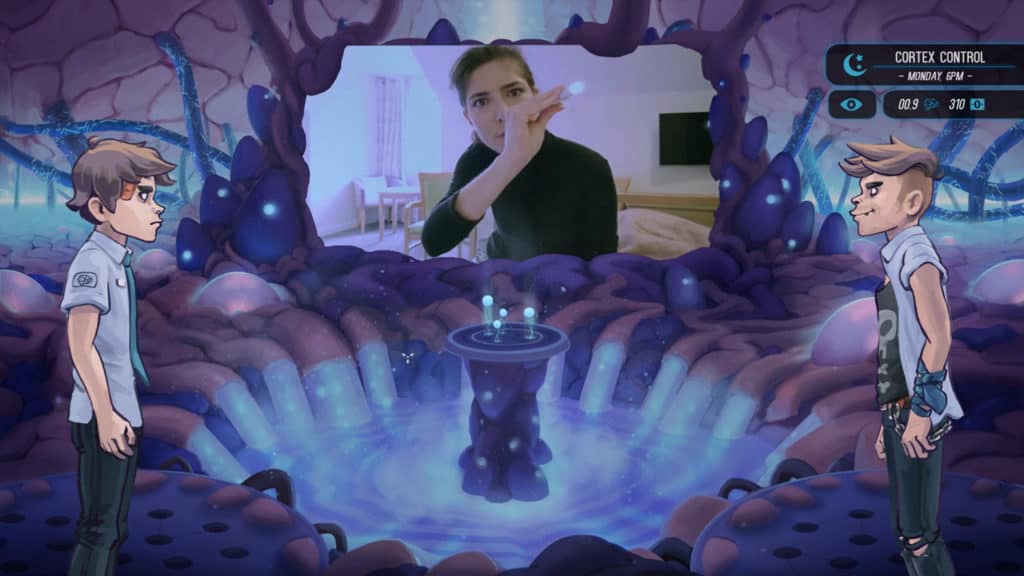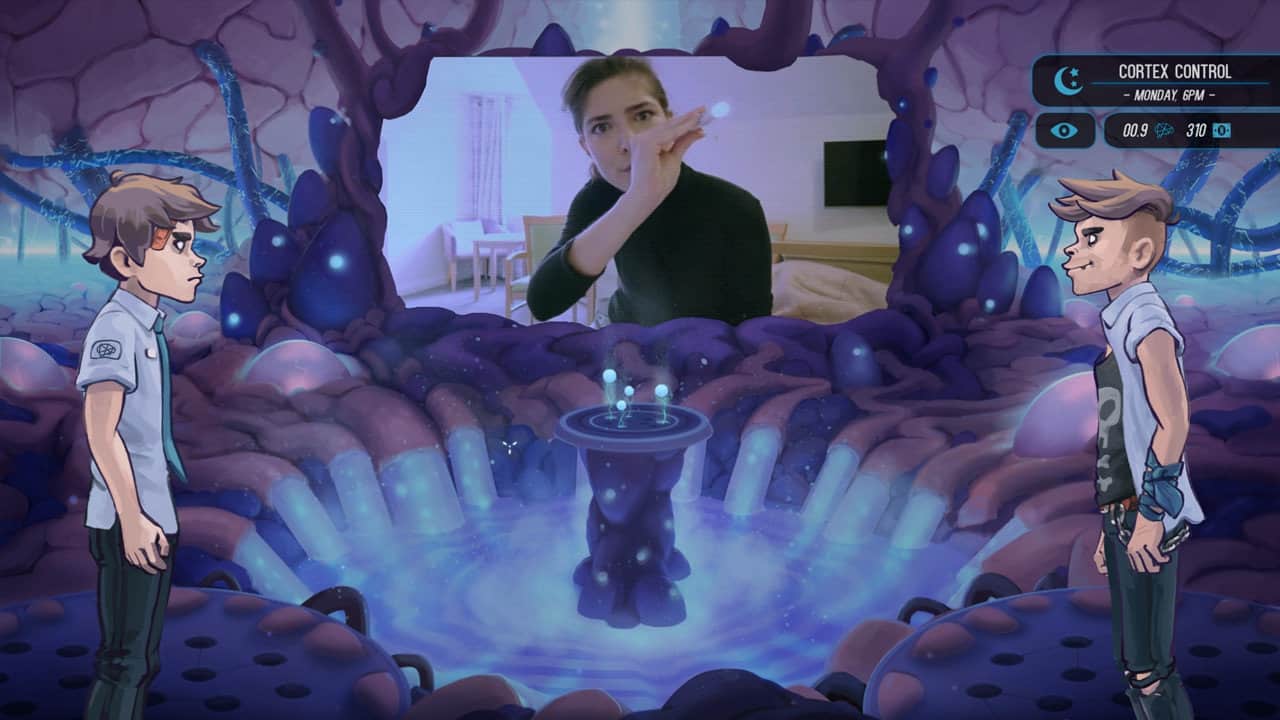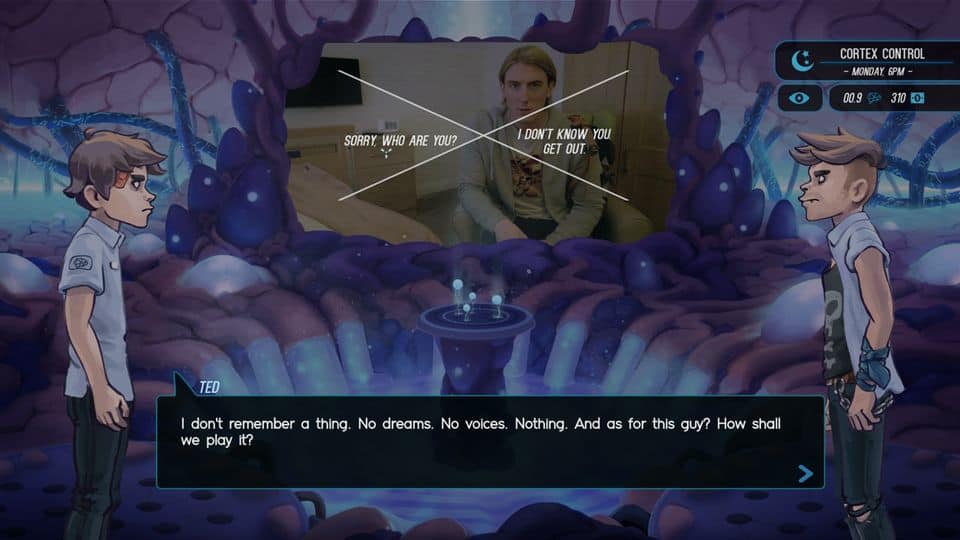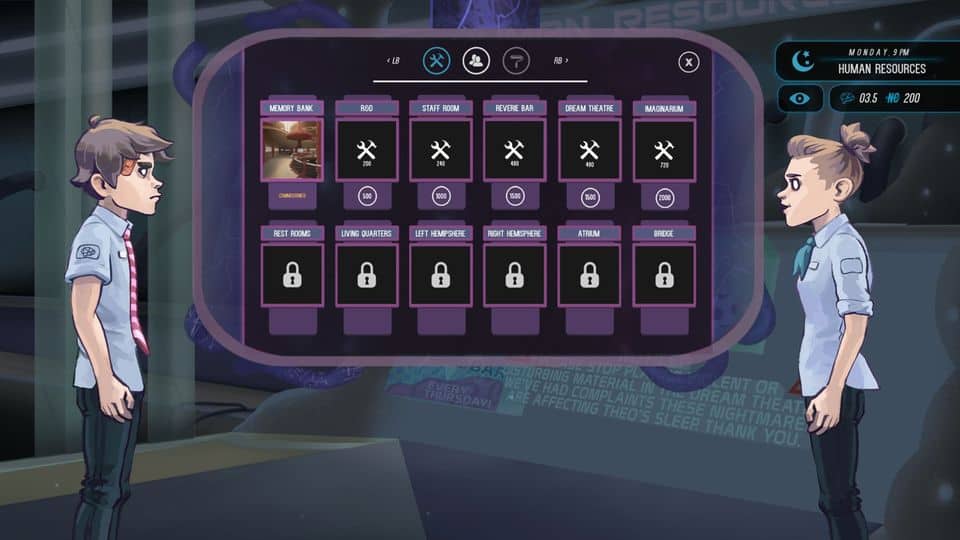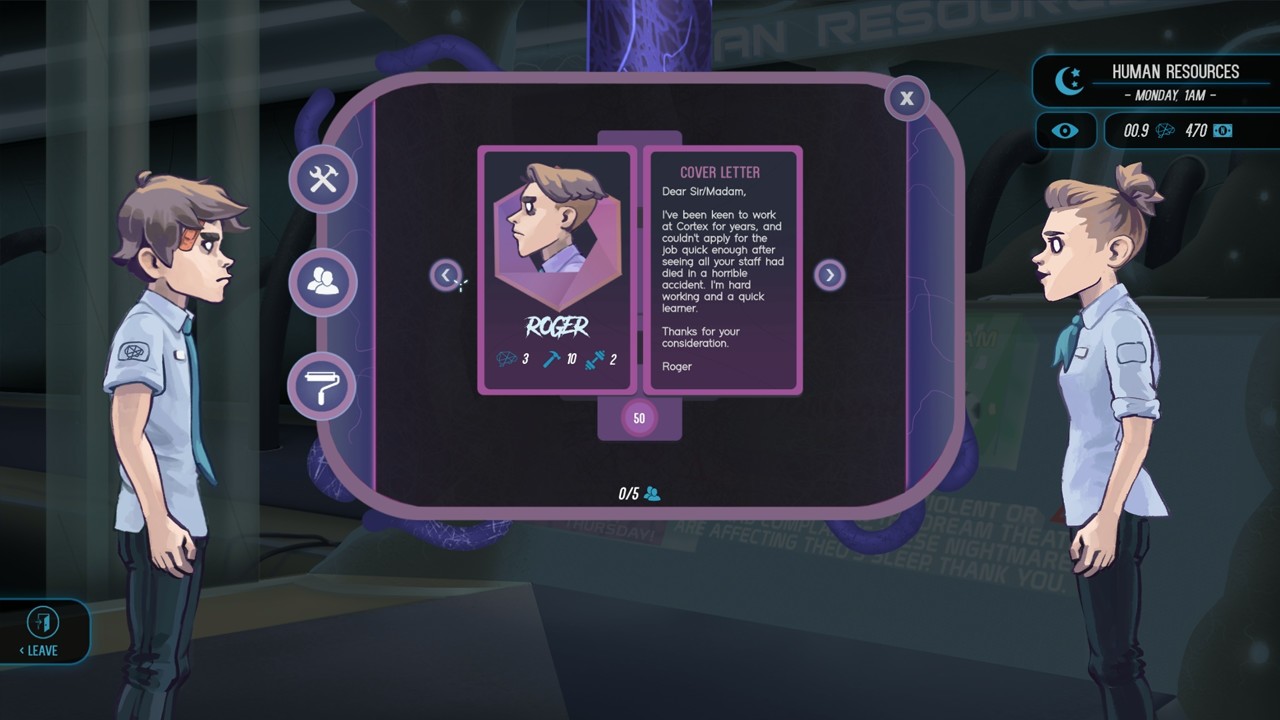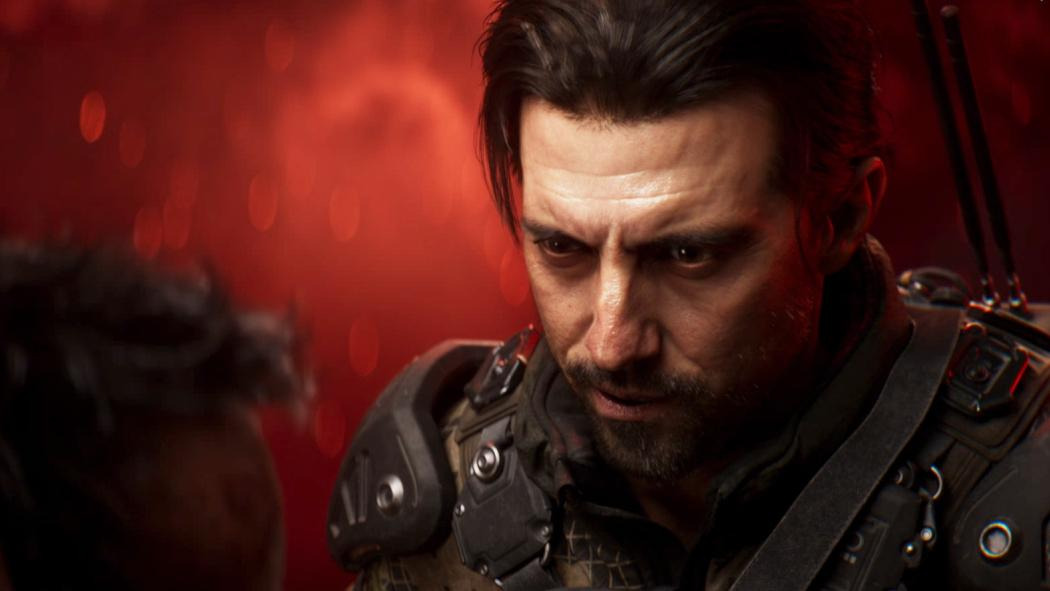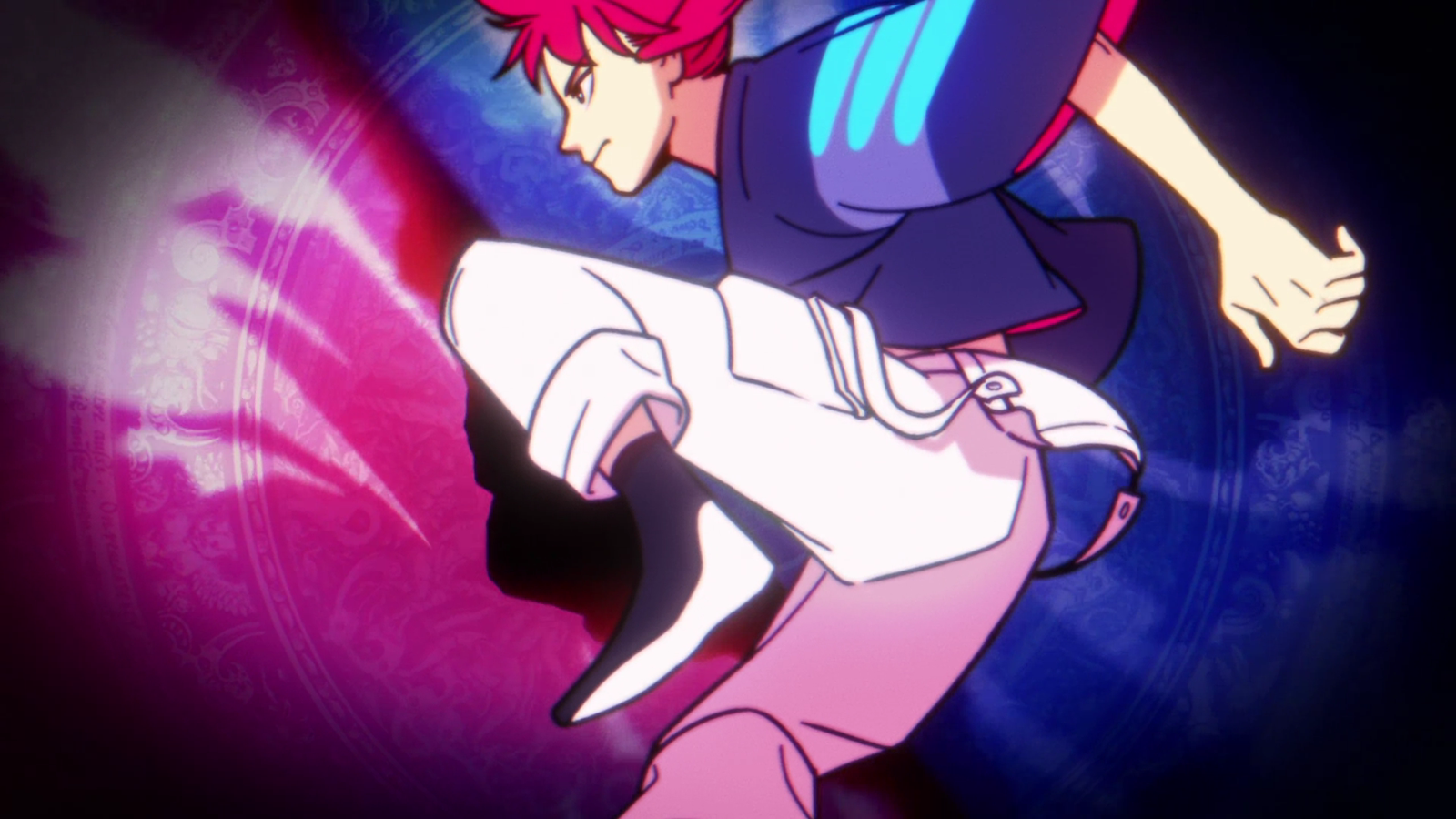You can trust VideoGamer. Our team of gaming experts spend hours testing and reviewing the latest games, to ensure you're reading the most comprehensive guide possible. Rest assured, all imagery and advice is unique and original. Check out how we test and review games here
In spite of our technological advances, and collaboration between the greatest minds in the business, there’s a lot we don’t know about brains. A mess of knotted pink and grey matter, they contain an entire identity and all the important instructions that keep a person going. And sometimes it all goes wrong, which serves as the premise for Headspun, a point and click FMV and simulation game from developer Superstring.
Headspun riffs off one of my favourite metaphors: a tiny workforce of suited and booted cartoon characters who wander the halls of a brain providing upkeep. This brain belongs to Theo Kavinsky, but it’s not business as usual. Theo sustained neurological trauma in a car crash and commander-in-chief Ted is one of the few survivors. Corridors and departments within the brain have been destroyed, and Theo has no memory of his life before the accident. The mystery of what really happened that night will only be pieced together as Theo recovers, rebuilding the brain and generating memories through completing recuperative activities, which is represented in the business sim aspect of the game.
The business simulation is what I enjoyed the most about Headspun. To restore Theo’s mind, there are minigames that generate credits — termed Neuros — which you spend on hiring new staff, renovating destroyed areas of the brain, and items that provide buffs for Ted. The games are simple timed point-and-click games and puzzles, and the higher your score, the greater the return on credits. I spent Neuros on an alarm clock, so that Ted wakes an hour earlier and can complete more activities before Theo falls asleep at 10.00pm. Theo is still recovering, however, so you’ll need to let him rest between activities to let his energy restore. Cleverly, if you prioritise naps, it temporarily doubles, triples, or quadruples the gains from minigames. The importance of doing nothing is a refreshing strategy in a game all about balancing a day’s work with recovery. And as Ted walks around the brain and encounters new characters, new quests will appear, and priorities will change. You’ll always have a main story task to complete, but watching Theo’s brain progress as a result of your actions is satisfying. It’s probably how doctors and nurses feel, but without the five year studying commitment, nor the risk of accidentally killing someone.
Each shift begins in the Cortex Control centre, the brain’s headquarters where these minigames are completed and tasks for the workforce are divvied out. Here, Ted is greeted by Teddy, the rebellious foil to his organised primness. The two characters clash in their views of how to bring their shared brain to full health again, and I liked that Teddy is clearly the impulsive subconscious and Ted represents the rational conscious. Waking Theo up each morning, this is where Headspun uses FMV quite innovatively, showing us the world through the eyes of Theo resting in a hospice bed. Characters, including his neurologist and his best friend, visit Theo, and the game provides you a few dialogue choices to exhaust before the scene moves on. Ted and Teddy have their own perspectives on what Theo learns in conversation, and often these discussions would lead to arguments, and frustratingly not go anywhere. The real-life actors’ performances are a little over the top, too, but it’s a cool way to integrate the hand-drawn world with the real world. It represents wonderfully that the human brain mashes machine-like structure with softer and blurrier tendencies, balancing keeping us standing upright while trying desperately not to trip over our words on a first date.
But, just like the brain it’s replicating, there’s stuff that doesn’t quite work. I encountered Ted having conversations with no one, and, being unable to click out of that, I’d have to exit and start again. The minigames would occasionally be unselectable, not for any story reason, but it would allow me to pick just two activities instead of the full range. I know Theo is bed bound, recovering in a hospice, but repeating crossword puzzles over and over gets a bit stale when you know you could use weights or read instead. And it’s pulled in two hemispheres of genre – business sim and mystery narrative. It offers up the freedom of picking and choosing how to spend resources, until it doesn’t. I wished that, instead of clicking and reading passages of dialogue, the facts of the accident would organically come to the fore as parts of the brain reawakened.
It’s a shame, because there’s a lot that Headspun does really well. I appreciate its explanation of how memories work in the Memory Bank. Memories aren’t so much a filing cabinet of instances ordered by date that can be tidily taken out, reviewed, and popped away again. They’re more like a spiderweb that is sparked by different triggers, like seeing a red car that makes you think of a family holiday where you were stung by a bee on the beach. It explains how and why Theo can’t remember his previous life, and what it would take to find himself again. I just wish I could get there, uninterrupted.
Developer: Superstring
Publisher: Wales Interactive
Available on: PC [reviewed on], PlayStation 4, Xbox One, Nintendo Switch
Release Date: August 28, 2019
To check what a review score means from us, click here.
Headspun
- Platform(s): macOS, Nintendo Switch, PC, PlayStation 4, Xbox One
- Genre(s): Adventure, Indie
